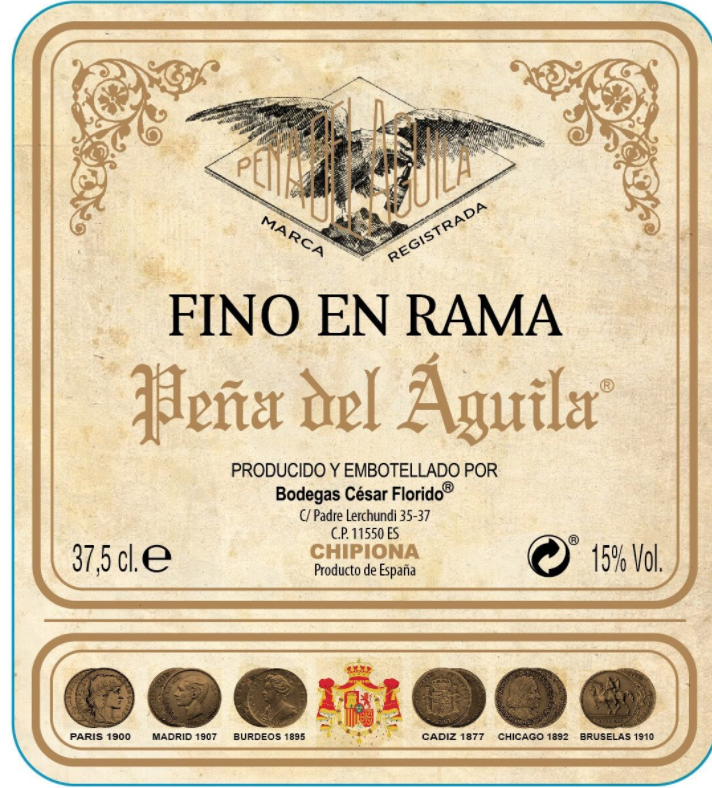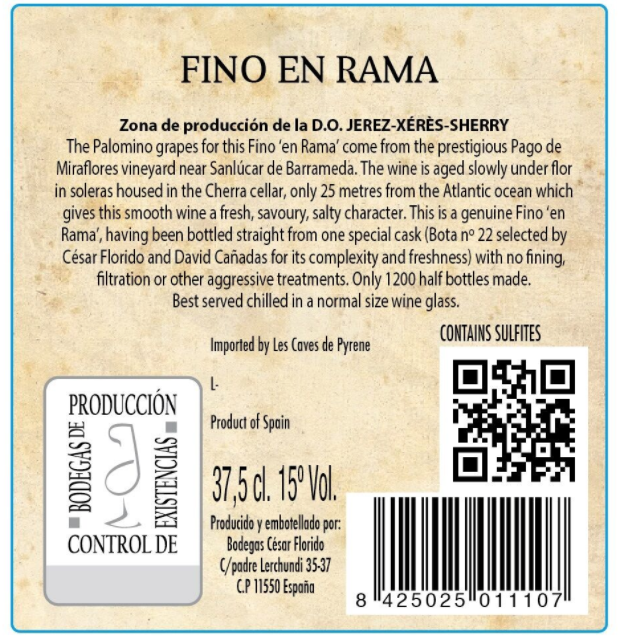
One of the most compelling developments of the nascent sherry renaissance has been the emergence of a new style known as en rama, which roughly translates to “on the branch” or “raw.”
A lot of sherry, dare one say, is much of a muchness. It is not just process, it is also outcome. The commercial sherries trade on brand recognition, which involves consistency and consistency can be only be achieved by manipulative techniques.
En rama refers specifically to the so-called “biologically aged” categories of fino and manzanilla sherry. Unlike the nuttier, richer “oxidatively aged” styles like oloroso, which intentionally come into contact with oxygen during the aging process, fino and manzanilla sherries are fortified only to around 15% alcohol, which allows a layer of living yeast, known as flor, to develop on the surface of the wines as they mature in barrel (hence the term “biological aging). In addition to imparting tell-tale briny and saline aromas and flavours, with a characteristic biscuit-y yeastiness, this protective film also protects the wine from being exposed to air or slows down the oxidative process. The result is the palest, freshest, and driest style of sherry, traditionally served with all manner of local seafood.
The production of these “biologically-aged” finos and manzanillas typically involves heavy fining and filtration before bottling in order to remove the bits of flor and other sediment that have accumulated during the course of the wine’s production. This process often “strips the wine of its colour as well as its flavours and aromas and sacrifices some of the sherry’s natural richness and complexity for the sake of a more stable commercial product.
There’s filtration and there’s filtration. Sometimes this involves a combination of cold stabilisation and charcoal filtration that leaves the sherry as neutral as can be and this undeniably alters the nature of the original wine. It seems odd to an aficionado of low intervention wines that you would discard all that animates the original wine i.e. the lees and imbues that wine with textural complexity.

To that end, the en rama approach showcases a different, more raw (or primary) expression of sherry’s potential. Bottled with minimal or zero filtration or zero and released seasonally, en rama sherry offers a much closer approximation of what the wine would have tasted like in its natural state, taken directly from the cask, with all it aromatic intensity, fullness of body, and essential flavours intact. As great as this sounds, it’s worth noting that one style isn’t necessarily better than the other. Sometimes, all you want is a crisp filtered fino to wash down a plate of oysters on a hot summer day. The two approaches simply result in different but equally valid interpretations of the category, which, taken together, expand the region’s stylistic diversity and broaden the possibilities of what sherry can be.
Up until recently (with a few exceptions), the only viable way to taste sherry en rama was to go to Jerez, visit the bodegas, and taste the wine poured directly from the cask.
One caveat. I suspect there is quite a bit of en rama on the market that doesn’t really justify the tag. I have tasted versions where the colour and flavours were indistinguishable from the filtered versions.
There’s no doubt, however, that the genuine en rama version offers the more complex drinking experience: it’s pungent and saline, with notes of yellow apple, green olives, and a hint of almond, along with a corresponding fullness of body that somehow manages to be bracingly acid-driven and fresh.
The Palomino grapes for the Bodegas Cesar Florido fino en rama come from the prestigious Pago de Miraflores vineyard near Sanlucar. The wine is aged slowly under flor in the cellar solera, a mere 25 metres from the Atlantic Ocean. From one special cask (Bota No 22) –bottled to order just for Les Caves de Pyrene – making 600 halves – without filtration or fining.
Coming soon!

